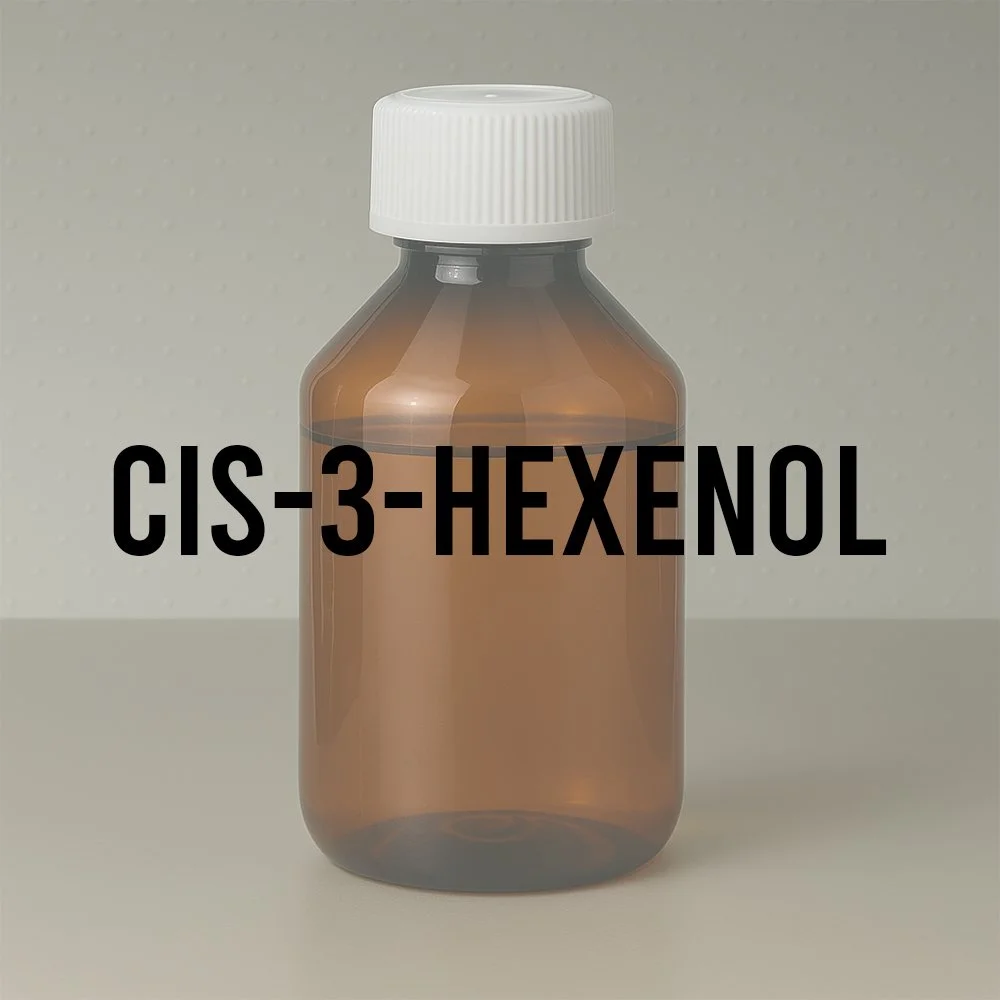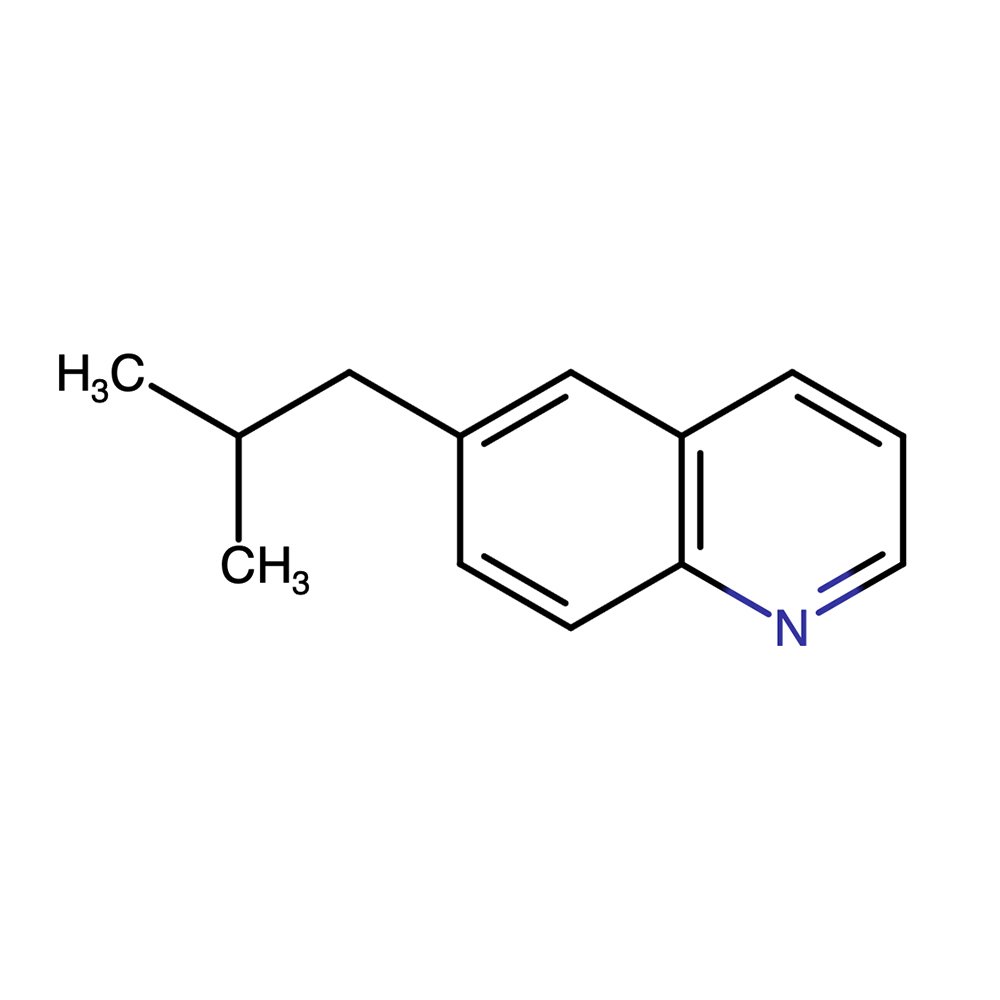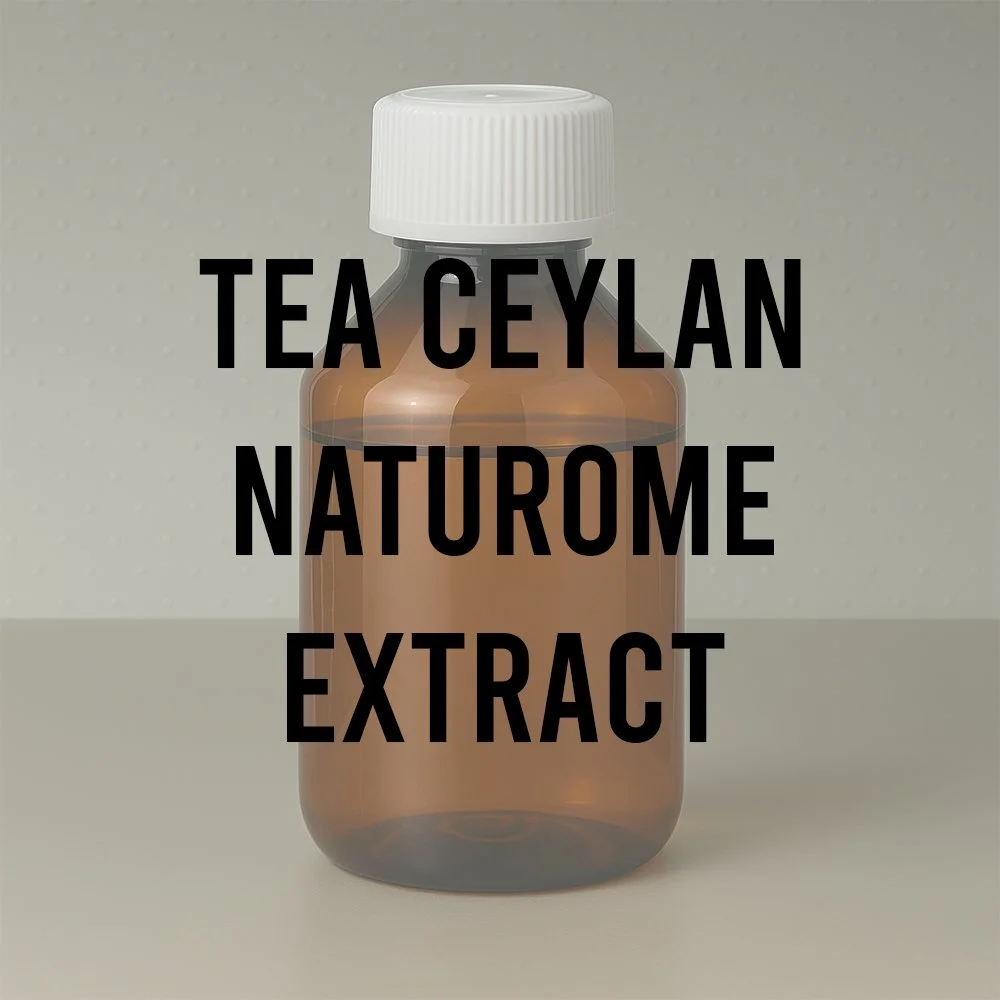Cis-3-Hexenol / (Z)-3-Hexenol (Leaf Alcohol) Technical Overview
🔎 Chemical Name — (3Z)-Hex-3-en-1-ol
🧪 Synonyms — Leaf alcohol, cis-3-Hexenol, cis-3-Hexen-1-ol, Blätteralkohol, Z-3-Hexenol, β,γ-Hexenol
📂 CAS Number — 928-96-1
📘 FEMA Number — 2563
⚖️ Molecular Weight — 100.16 g/mol
📝 Odor Type — Green, fresh, herbaceous
📈 Odor Strength — High intensity (very powerful green note)
👃🏼 Odor Profile — Intensely green, characteristic freshly cut grass aroma with herbaceous, leafy undertones; sweet vegetable nuances when diluted
⚗️ Uses — Perfumery (floral-green top notes), flavor applications (fruit and mint), functional fragrances, biological control agents
🧴 Appearance — Colorless to pale yellow liquid
What is Cis-3-Hexenol?
(Z)-3-Hexenol, commonly known as leaf alcohol, is an unsaturated primary alcohol classified as a C6 green leaf volatile (GLV) compound (Rowe, 2005). This stereoisomer possesses a cis configuration at the double bond between positions 3 and 4, distinguishing it from its trans isomer. The compound exists naturally in small quantities in most plants and represents one of the primary volatiles released when green vegetation is physically damaged. Its molecular structure consists of a six-carbon chain with a double bond in the Z-configuration and a terminal hydroxyl group, conferring its characteristic intensely fresh, green aroma reminiscent of newly cut grass (Bauer et al., 2001).
Historical Background
Japanese agricultural chemist Sankichi Takei discovered cis-3-hexenol in tea leaves (Thea sinensis) from the Uji tea-producing region of Kyoto during the 1930s, referring to it as ‘青葉アルコール’ (green leaf alcohol) (Foreverest, 2024). This discovery established the foundation for understanding green leaf volatiles in plant biology and perfumery.
The compound was later synthesized and its chemical structure clarified by Ružička and Schinz, who also developed early synthetic routes. Subsequent work by Stoll and Rouvé documented significant differences between natural and synthetic products in terms of trace impurities and overall olfactory character (Bauer et al., 2001).
The commercial significance of cis-3-hexenol expanded dramatically with its use in Germaine Cellier’s revolutionary fragrance “Vent Vert” (Balmain, 1945), where it was employed alongside galbanum oil to create an unprecedented fresh green character in fine perfumery (Rowe, 2005). This landmark composition established leaf alcohol as an essential material for modern perfumery.
Olfactory Profile
Scent Family
Green, herbaceous, fresh
Main Descriptors
Primary: Intensely green, freshly cut grass, crushed green leaves
Secondary: Herbaceous, leafy, vegetable-like
Tertiary: Sweet nuances when highly diluted
Intensity
Extremely high odor intensity; substantially stronger than the corresponding aldehyde (cis-3-hexenal). Requires careful dosing to avoid overwhelming compositions—typical usage levels range from 0.15% in fine fragrance compounds, with some formulations requiring only 0.5% or less to achieve significant green leaf character (Bauer et al., 2001).
Tenacity
Moderate persistence; lasts more than 4 hours on blotter strips. As an unsaturated primary alcohol, it provides reasonable substantivity while maintaining volatility appropriate for top note applications.
Volatility
Top note material with high initial impact. The unsaturated structure and relatively low molecular weight (100.16 g/mol) contribute to rapid evaporation, though less volatile than the corresponding aldehyde.
Applications in Fine Fragrance
Primary Roles
Leaf alcohol serves as an essential component for creating authentic green freshness across multiple fragrance categories. According to Arctander, traces of cis-3-hexenol are employed in refreshing top notes within delicate floral types including muguet, lilac, and rose compositions (Bauer et al., 2001).
Typical Combinations
Floral Accords: Blends effectively with geranium oil, violet leaf, jasmine sambac, and rose absolute
Fresh Compositions: Combines with galbanum, oakmoss, lavender, and mint oils
Fruity Effects: Jean-Claude Ellena documents its use with β-ionone, frambinone, and fructone to create raspberry illusions; also effective in green apple accords
Performance in Formula
Demonstrates excellent blending behavior in both fine fragrance and functional applications. The material provides lift to fruity accords and adds natural leafy character to floral bases. Notable pairing behavior includes synergistic effects with verdantol, muguet bases, and woody-amber materials where it provides unexpected freshness (Pell Wall, n.d.). Requires careful measurement due to high potency—overdosing readily occurs and can dominate compositions.
Industrial & Technical Uses
Beyond perfumery, cis-3-hexenol functions as a flavoring agent in food applications, particularly for fruit flavors (banana, strawberry, citrus, grape, apple) and mint preparations. The compound serves as a precursor for synthesizing various esters including cis-3-hexenyl acetate, cis-3-hexenyl benzoate, and cis-3-hexenyl salicylate through esterification reactions (Rowe, 2005). In biological control, the material acts as an insect attractant and pheromone component for pest management applications.
Regulatory & Safety Overview
IFRA Status: No restrictions under IFRA Amendment 51 for Category 4 applications (https://ifrafragrance.org)
EU Cosmetics Regulation: Compliant with EU Regulation 1223/2009
FEMA Status: FEMA 2563 (approved flavor ingredient); also FDA approved under 21 CFR 172.515
Additional Classifications: Flavis Number 2.056, Council of Europe No. 750
Toxicology: Generally recognized as safe for intended uses. Material classified as Flammable Liquid Category 3 (H226). No known allergen concerns under current EU allergen regulations.
References
Bauer, K., Garbe, D., & Surburg, H. (2001). Common fragrance and flavor materials: Preparation, properties and uses(4th ed.). Wiley-VCH.
Foreverest Resources. (2024, April 12). Overview of cis-3-Hexenol and its derivatives in comparison to geraniol and beta-eudesmol. https://foreverest.net/news-list/overview-of-cis-3-hexenol-and-its-derivatives-in-comparison-to-geraniol-and-beta-eudesmol
International Fragrance Association. (2023). IFRA Standards Amendment 51. https://ifrafragrance.org
Pell Wall Perfumes. (n.d.). cis-3-Hexenol. https://pellwall.com/products/cis-3-hexenol
Rowe, D. J. (Ed.). (2005). Chemistry and technology of flavors and fragrances. Blackwell Publishing.
For additional technical documentation including SDS, IFRA certificates, and specifications, consult individual suppliers. This overview is intended for fragrance industry professionals and should be used in conjunction with proper safety protocols and regulatory compliance procedures.











